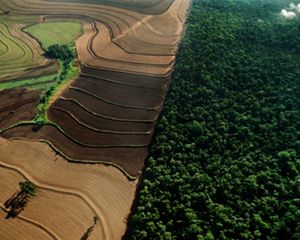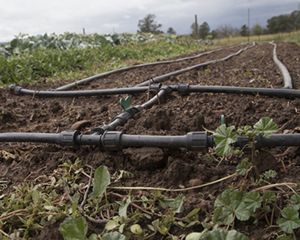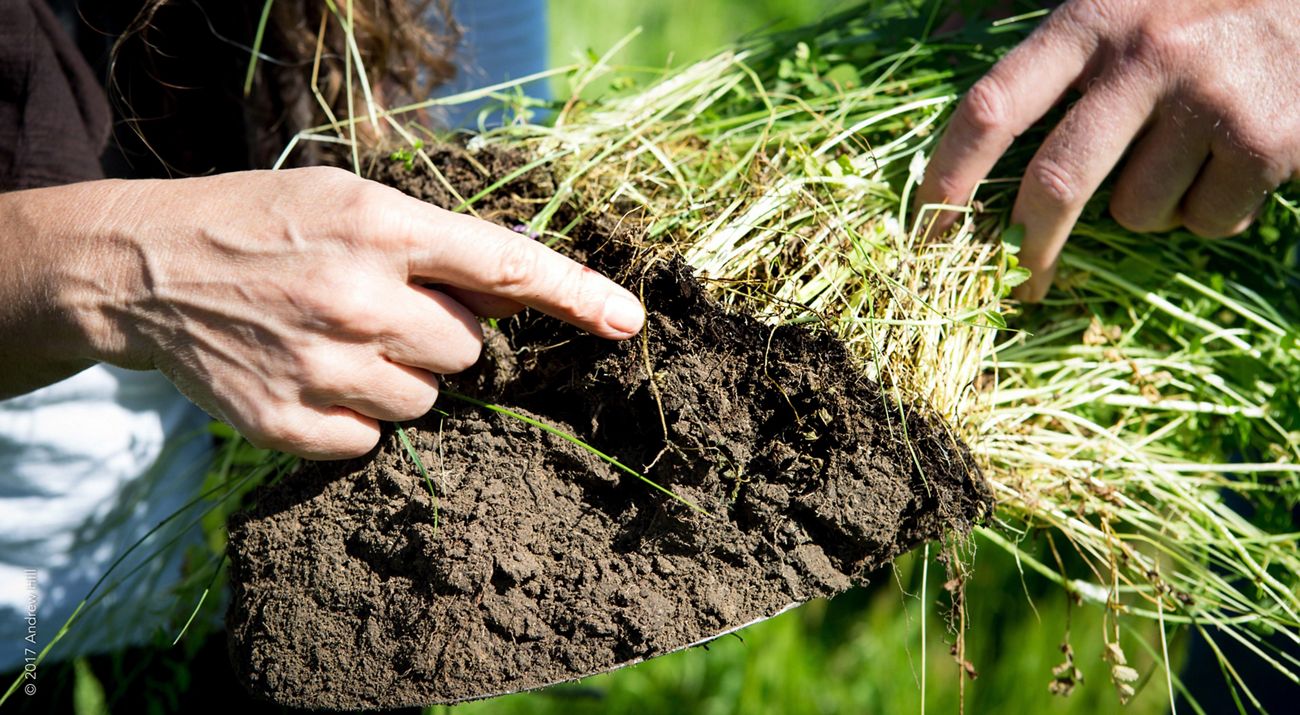
Any thriving natural or agricultural ecosystem begins with soil. And how we choose to manage soil impacts not just the amount and quality of food we produce, but whether we exacerbate or mitigate climate change, and the health of the terrestrial and aquatic ecosystems on which life depends.
The last few years have seen a growing recognition of the importance of soil—from movements to expand small-scale farming, to global efforts to improve soil in industrial agriculture, to strategies to boost the role of soil in mitigating climate change. At the global level, UN Sustainable Development Goal 15 pledges to restore degraded land and soil by 2030; the 4 per 1000 Initiative aims to enhance soil quality and carbon sequestration through improved agricultural practices; and the UNCCD Global Land Outlook presents a transformative vision for land management policy, planning and practice.
These are welcome signs that more key stakeholders realize that a tool for addressing many of our most pressing environmental challenges and development priorities is right under our feet.
At a more local level, farmers and other land users are realizing that many of the soil management practices they are already using to avoid erosion or increase productivity in fact fall into a ‘happy coincidence’ category, as they generate multiple positive outcomes. As shown in the table below, most common soil management practices contribute to at least two of three important goals: food, climate and ecosystem health.
How Can Science Advance Soil Solutions?
Soil science can be a driving force for achieving sustainable development when it responds directly to the needs of practitioners and decision-makers from local to national and global scales—there is still room for new evidence to generate and guide real-world solutions that boost food production, fight climate change and protect nature.
At The Nature Conservancy, we prioritize three types of applied soil science:
- Translational research that converts scientific knowledge into practical, actionable information. This includes systematic analysis of the effectiveness of different land management practices for building soil organic carbon and identifying market-based mechanisms to incentivize soil carbon sequestration. These analyses can help provide a more compelling value proposition for farmers and land managers and a stronger business case for public and private investors, both of which are vital for generating the level of finance needed to scale up improved soil management globally. Priorities include building knowledge on soil organic carbon among potential investors and further research into financial mechanisms that can dismantle barriers to soil carbon projects. By providing clear evidence of both advantages and uncertainties, this kind of research enables informed decision-making, attracts investment and enhances results.
- Empirical and modelling studies that expand our knowledge of how to conserve and restore soil more effectively. These include experiments to generate new data on relationships between land management practices and their impacts on food production, water retention and carbon storage. Modelling is often used when we want to simplify a complex system to better understand, define, quantify or simulate a specific aspect of it. These studies can answer fundamental questions related to key conservation, climate and agricultural challenges and produce transformational information. By helping farmers and other land managers to visualize the outcomes of different practices—including to their bottom line—empirical and modelling studies have the power to kick-start action.
- Developing tools for measuring and monitoring the impact of different soil management practices. There is growth in this area, including in the fields of remote sensing, spatial science, digital mapping, and rapid and low-cost tools for measuring soil properties. Further developments of these methods could rapidly bring down the costs of monitoring soil organic carbon and soil health. Future goals should include devising a technical method for valuing the multiple benefits of soil organic carbon in watersheds and landscapes. Standardized tools and metrics can be powerful accelerators of progress both in science and on the ground; they are also crucial to monitoring higher-level goals, like the UN Sustainable Development Goals (SDGs). Better monitoring can drive more effective policy, and ongoing innovations in this area of soil science offer huge untapped promise.
Collaborative, targeted, applied soil science in these areas will help local land managers to make decisions that can both increase the productivity of their soil and improve water quality and biodiversity, encourage investors and policy-makers to prioritize soil management, and contribute to the global imperative of feeding a growing population while mitigating climate change.
Types of Biophysical Conservation Practices That Could Impact Soil
This is not an exhaustive list but a sample of common types of practices.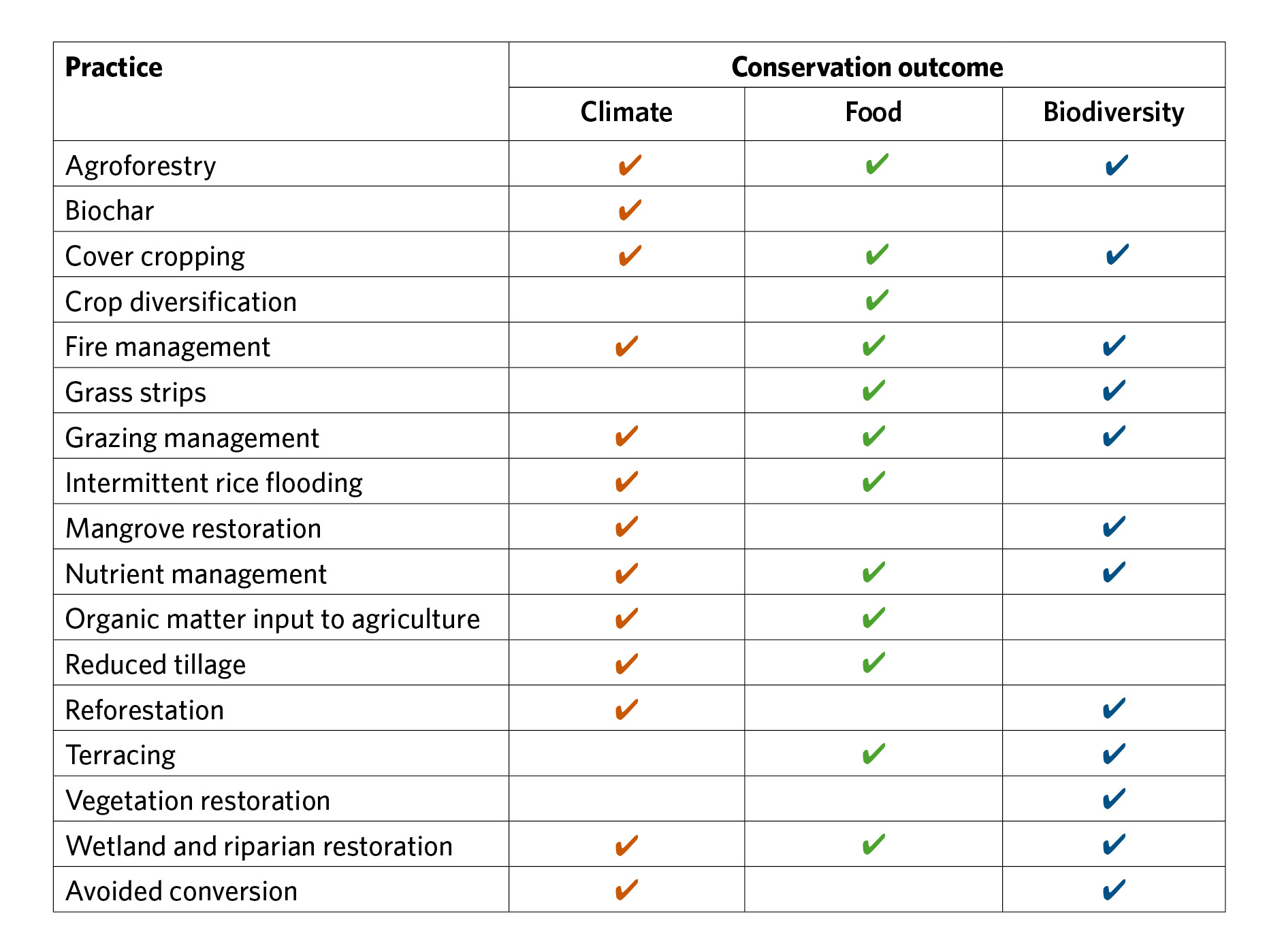
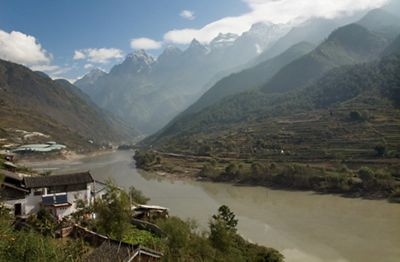
Soil Science Priorities
We have identified ten global soil-related objectives, including four emerging areas that require more applied soil science and are presented in the below table. A large number of them focus on soil organic carbon, because it is a useful proxy for soil health and the common denominator for achieving the multiple benefits we hope for.
The pressing need to meet these objectives creates a compelling case for soil scientists, soil practitioners, non-profit organizations, investors, communities and governments to step up a notch and collaborate to develop and deliver soil solutions for our food, climate and environment. That is the soil science imperative we face.
Ground Level: TNC Soil Projects
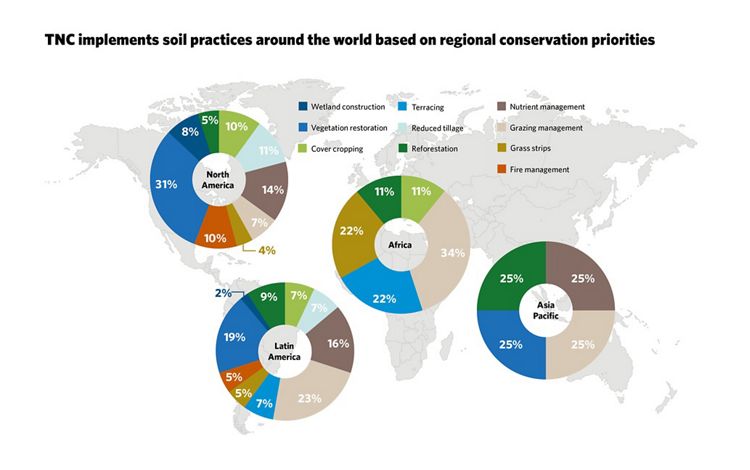
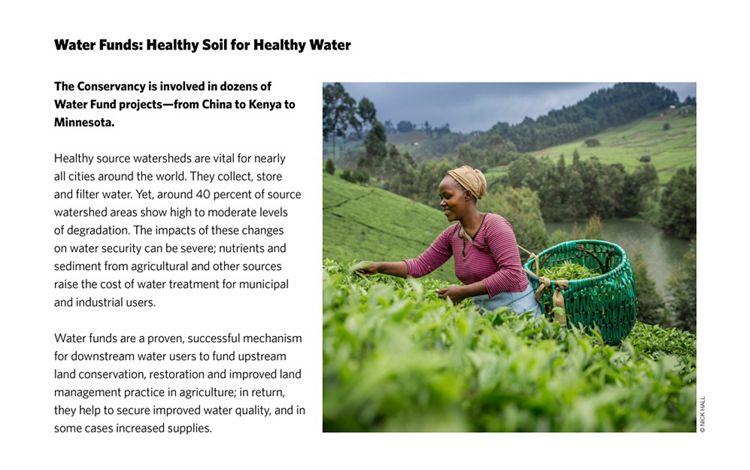
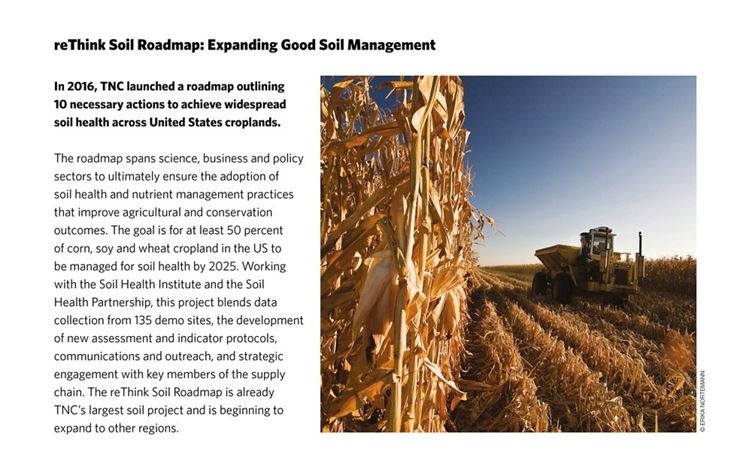
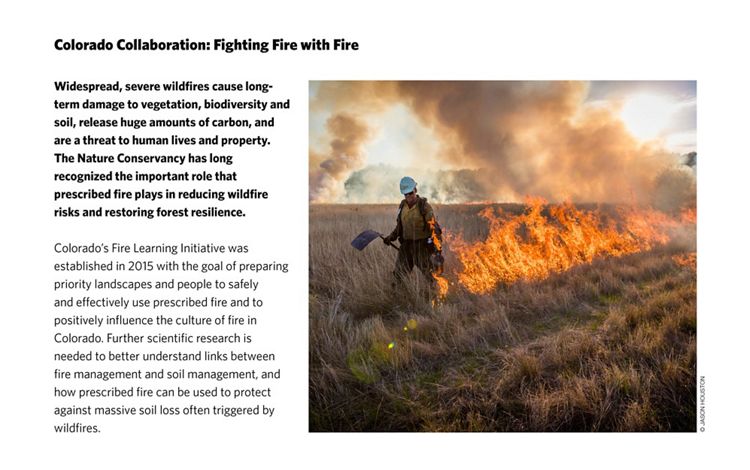


Resources
Global Insights
Check out our latest thinking and real-world solutions to some of the most complex challenges facing people and the planet today.
